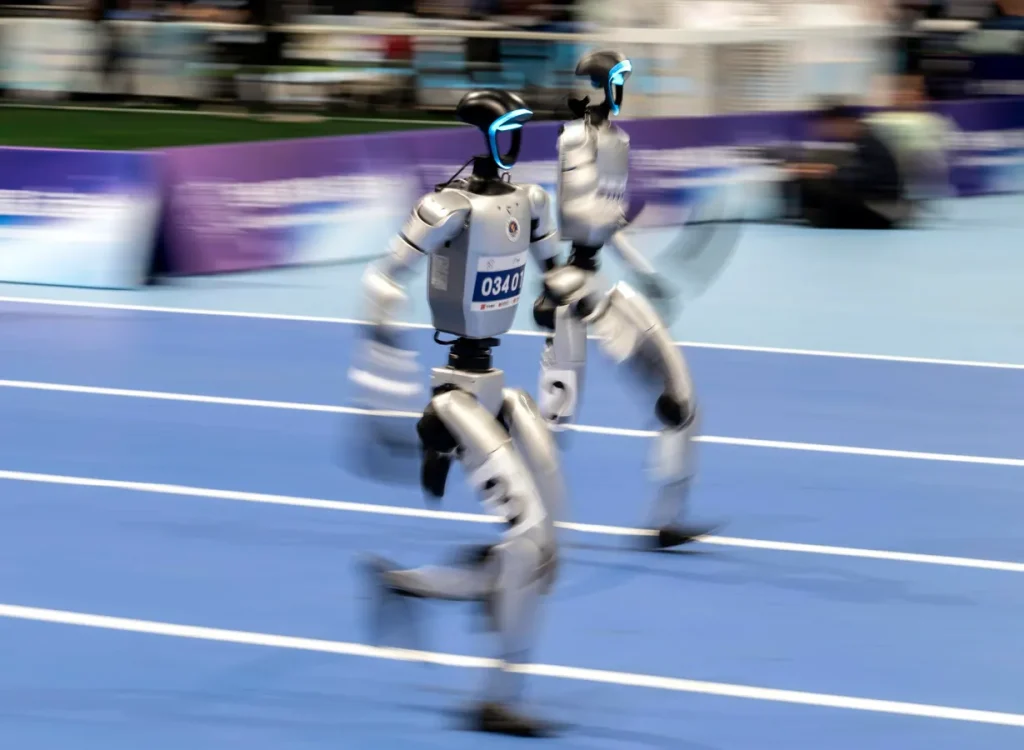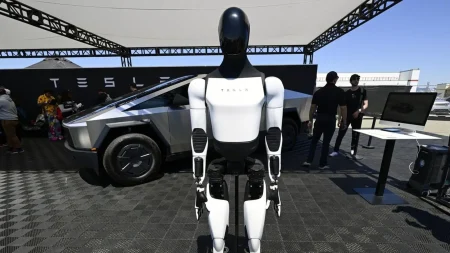The New Era of Humanoid Robotics: Silicon Valley’s Secret Projects
The artificial intelligence revolution has ignited unprecedented interest in one of technology’s most challenging frontiers: humanoid robots. Two secretive Silicon Valley companies have emerged with substantial funding to develop human-shaped machines aimed at performing tasks typically done by people. Palo Alto-based Rhoda AI and Genesis AI have collectively secured over $300 million in investment capital, joining an increasingly competitive field of companies betting that humanoid robots represent the next major technological breakthrough. With industry titans like Nvidia’s Jensen Huang describing humanoid robots as “potentially one of the largest industries ever,” these startups are racing to overcome the significant engineering challenges that have historically limited the capabilities of bipedal machines. While skeptics warn about premature commercialization, the enormous funding pouring into this sector suggests investors believe humanoid robots could transform industries ranging from manufacturing to household services.
Rhoda AI, founded by serial entrepreneur Jagdeep Singh, has quietly built a nearly billion-dollar valuation while developing what they call a “general purpose bimanual manipulation platform” – essentially a humanoid robot with two arms designed for heavy lifting. After raising a $162.6 million Series A round in April, bringing their total funding to $230 million, the company is tackling one of robotics’ most persistent challenges: creating machines capable of lifting substantial weights while maintaining balance and stability. Current humanoid robots typically struggle with loads exceeding 50 pounds, severely limiting their industrial applications. Singh, who previously founded Quantumscape (now a public company valued at nearly $10 billion) and Infinera (acquired by Nokia for $2.3 billion), has assembled a team including Stanford professor Gordon Wetzstein and Vincent Clerc, who previously worked on Softbank’s Pepper robot, suggesting the company is bringing significant technical expertise to the challenge.
Genesis AI represents another ambitious entrant in the humanoid robotics space, having secured a remarkable $105 million seed round from prominent investors including Khosla Ventures and former Google CEO Eric Schmidt. Unlike traditional bipedal humanoids, Genesis AI is developing a hybrid approach – robots with two arms but wheels instead of legs, potentially addressing some of the stability and energy efficiency challenges that have plagued walking robots. According to CEO Zhou Xian, the company isn’t building humanoids entirely from scratch but instead working with hardware vendors on custom robots while focusing their internal efforts on the software models that will control these machines. This strategic approach could allow Genesis AI to bring their solutions to market more quickly while developing robots that are “cheaper, lighter and less dangerous” than competitors like Tesla’s Optimus.
These newcomers join an increasingly crowded field of well-funded humanoid robotics ventures that have attracted extraordinary investment despite limited commercial deployment to date. Figure AI recently announced it had raised over $1 billion at a staggering $39 billion valuation, while 1X is reportedly raising $1 billion of its own. Meanwhile, Tesla continues development of its Optimus humanoid robot, with CEO Elon Musk repeatedly claiming it will eventually become the most valuable division within Tesla – though reports suggest the project has encountered significant engineering and production challenges. The massive valuations and funding rounds reflect investor optimism that these companies can overcome the technical hurdles that have historically limited humanoid robotics to research labs and demonstration projects rather than practical commercial applications.
The surge of investment into humanoid robotics reflects a broader pattern following the remarkable success of large language models like ChatGPT. Investors who witnessed the rapid commercialization and adoption of AI are now seeking the next technological breakthrough, with many betting that robotics represents a natural evolution of artificial intelligence – moving from digital environments to physical embodiment. The potential applications span numerous industries: factory automation, warehouse logistics, elder care, household assistance, and dangerous environments unsuitable for human workers. If these companies succeed in creating reliable, versatile humanoid robots at reasonable cost points, they could transform labor markets and create entirely new categories of products and services. The integration of advanced AI systems with increasingly capable robotic hardware promises machines that can not only follow instructions but potentially learn new tasks through demonstration or natural language guidance.
Despite the excitement and unprecedented funding, significant skepticism remains about the timeline for commercial viability of humanoid robots. Kane Hsieh, general partner at Root Ventures who specializes in hardware startups, notes that while investor optimism is driving considerable hype, the rapid progression “from cool, promising research to doing 100 million dollar seed rounds” gives reason for caution. The history of robotics is littered with ambitious projects that encountered unexpected challenges in moving from controlled demonstrations to reliable real-world deployment. The engineering complexities of creating machines that can safely navigate human environments, manipulate objects with precision, and operate autonomously for extended periods remain formidable. Nevertheless, the concentration of talent and capital in companies like Rhoda AI and Genesis AI suggests that humanoid robotics may finally be approaching a breakthrough moment after decades of halting progress. Whether these secretive ventures can deliver on their ambitious visions will likely become clearer in the coming years as they emerge from stealth mode and begin demonstrating their technologies.















